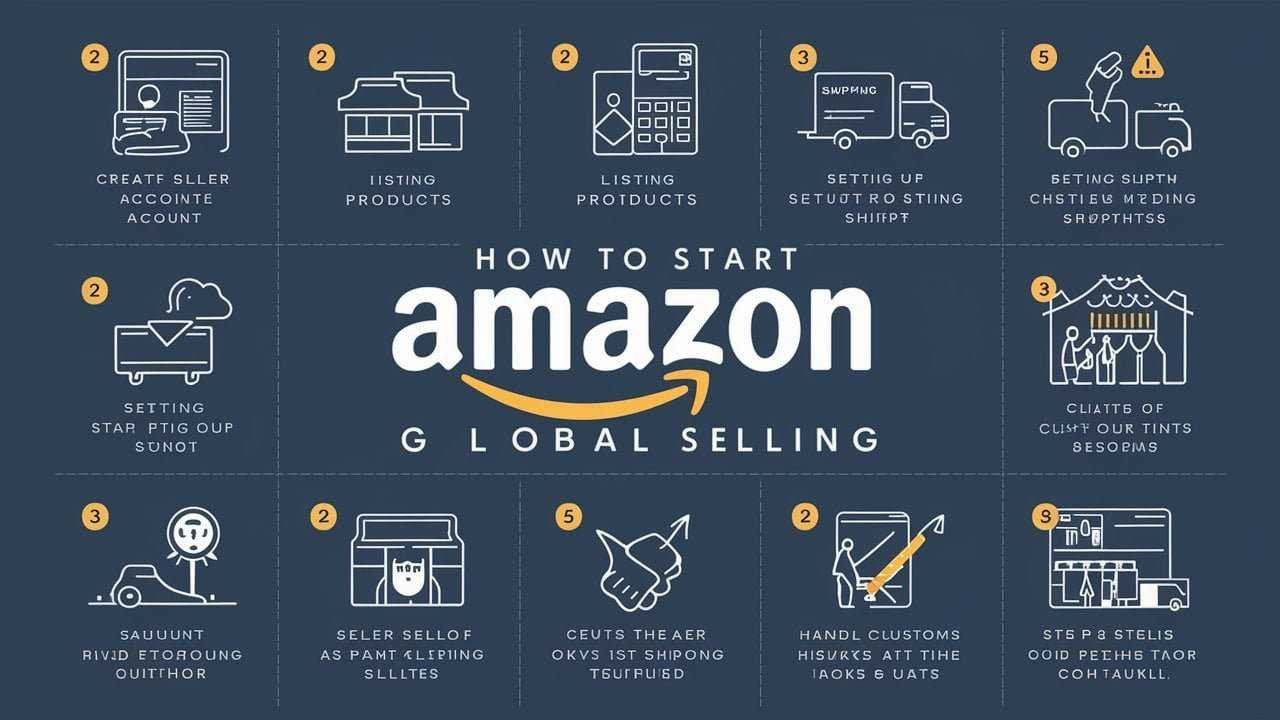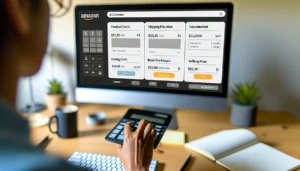Expanding your business globally through Amazon can unlock new revenue streams and introduce your products to millions of potential customers. Whether you’re a seasoned seller or new to the e-commerce world, understanding how to start Amazon Global Selling is crucial for tapping into international markets. This guide will provide you with detailed insights and step-by-step instructions to help you successfully launch your global selling journey on Amazon.
1. Introduction to How to Start Amazon Global Selling
Amazon Global Selling allows businesses to list and sell their products on various Amazon marketplaces around the world. This programme provides an opportunity for sellers to reach customers in countries such as the United States, Canada, the United Kingdom, Germany, France, Japan, Australia, and more. By leveraging Amazon’s global infrastructure and customer base, sellers can significantly expand their market reach.
2. Benefits of Selling on Amazon Globally
- Access to Millions of Customers: Amazon’s global marketplaces have millions of active users, providing a vast audience for your products.
- Established Trust and Brand Recognition: Customers trust Amazon for reliable service, fast shipping, and excellent customer support.
- Streamlined Operations: Amazon’s tools and services, such as Fulfilment by Amazon (FBA), simplify inventory management, shipping, and customer service.
- Increased Revenue Potential: Diversifying your sales channels by entering international markets can lead to significant revenue growth.
3. Market Research and Selection
Before you start Amazon Global Selling, it’s essential to conduct thorough market research to identify the best markets for your products. Consider factors such as:
- Market Demand: Use tools like Google Trends, Jungle Scout, and Amazon’s Best Sellers lists to gauge product demand in different countries.
- Competition: Analyse the competitive landscape to understand who your competitors are and how you can differentiate your products.
- Cultural Preferences: Research cultural nuances and preferences that might affect product selection and marketing strategies.
- Regulatory Environment: Familiarise yourself with local laws, regulations, and import restrictions that could impact your business.
Read More : Sell on Amazon for Free: A Comprehensive Guide
4. Registration and Account Setup
Setting up an Amazon seller account for global selling involves several steps:
- Choose Your Marketplace: Decide which Amazon marketplaces you want to sell in. You can start with one and gradually expand to others.
- Create a Seller Account: Register for a seller account on your chosen marketplace. If you already have an account in one region, you might be able to link it to other marketplaces.
- Provide Necessary Information: You’ll need to provide business information, tax identification numbers, and banking details.
- Verify Your Identity: Amazon requires identity verification to ensure the security of its platform.
For detailed instructions on setting up your Amazon seller account, visit the Amazon Seller Central Registration Guide.
5. Understanding Local Laws and Regulations
Compliance with local laws and regulations is crucial when selling internationally. Here are some key areas to consider:
- Taxes and VAT: Understand the tax obligations in each country where you plan to sell. This may include value-added tax (VAT) registration and reporting.
- Import and Export Regulations: Familiarise yourself with import duties, customs procedures, and product safety standards.
- Intellectual Property: Ensure your products do not infringe on any trademarks or patents in the target market.
For more information, refer to the Amazon Global Selling Tax and Regulatory Guide.

6. Optimising Product Listings for Global Markets
Creating optimised product listings is essential for attracting customers and improving your search rankings on Amazon. Follow these best practices:
- Keyword Research: Use tools like Helium 10, MerchantWords, and Amazon’s own search bar to identify relevant keywords for each marketplace.
- Localised Content: Translate your product titles, descriptions, and bullet points into the local language. Consider hiring professional translators to ensure accuracy.
- High-Quality Images: Use high-resolution images that comply with Amazon’s image guidelines. Show your product from multiple angles and in use.
- A+ Content: Enhance your product detail pages with A+ Content (formerly Enhanced Brand Content) to provide more detailed product information and improve conversion rates.
Learn more about optimising your listings in the Amazon Listing Optimization Guide.
7. Managing Inventory and Fulfilment
Efficient inventory management and fulfilment are critical for maintaining customer satisfaction and managing costs.
- Fulfilment by Amazon (FBA): FBA allows you to store your products in Amazon’s fulfilment centres. Amazon handles picking, packing, shipping, and customer service.
- Multi-Channel Fulfilment: If you sell on other platforms, you can use Amazon’s fulfilment centres to manage orders from multiple sales channels.
- Inventory Planning: Use tools like Forecastly and RestockPro to forecast demand and plan inventory replenishments.
For details on FBA, visit the Fulfillment by Amazon (FBA) Overview.
8. Pricing Strategies and Currency Considerations
Setting the right price for your products in different markets requires careful consideration.
- Competitive Pricing: Research the prices of similar products in your target market. Ensure your pricing is competitive while maintaining profitability.
- Currency Conversion: Use Amazon Currency Converter for Sellers (ACCS) to receive payments in your local currency. Be aware of exchange rates and conversion fees.
- Shipping and Handling Costs: Factor in additional costs such as international shipping, duties, and taxes when setting your prices.
Check out the Amazon Pricing Strategies Guide for more tips.
9. Marketing and Promoting Your Products
Effective marketing and promotion are essential for driving traffic to your listings and increasing sales.
- Amazon Advertising: Use Sponsored Products, Sponsored Brands, and Sponsored Display ads to increase visibility and drive sales.
- Social Media Marketing: Promote your products on social media platforms like Facebook, Instagram, and Twitter. Tailor your content to the preferences of each market.
- Influencer Partnerships: Collaborate with local influencers to reach new audiences and build brand credibility.
For a deeper dive into Amazon advertising, visit the Amazon Advertising Guide.
10. Handling Customer Service and Returns
Providing excellent customer service is key to maintaining positive reviews and customer satisfaction.
- Local Language Support: Offer customer support in the local language of each marketplace. Amazon’s FBA service includes local language customer support.
- Return Management: Set up a process for handling returns in each market. Consider using Amazon’s Global Returns programme to simplify return logistics.
Learn more about managing customer service in the Amazon Customer Service Best Practices.
11. Tips for Success in Amazon Global Selling
- Start Small: Begin with one or two marketplaces and gradually expand as you gain experience.
- Monitor Performance: Regularly review your sales data and performance metrics to identify areas for improvement.
- Stay Compliant: Keep up to date with changes in local laws and regulations to ensure ongoing compliance.
- Build Relationships: Establish relationships with local suppliers, logistics providers, and other key partners to support your global operations.
12. Conclusion
Starting Amazon Global Sales is a powerful way to expand your business and reach new customers around the world. By following the steps outlined in this guide and leveraging Amazon’s tools and services, you can successfully navigate the complexities of international e-commerce and achieve global growth.
Embark on your global selling journey today and unlock the vast potential of Amazon’s international marketplaces. With careful planning, strategic execution, and a focus on customer satisfaction, you can build a thriving global business on Amazon.





